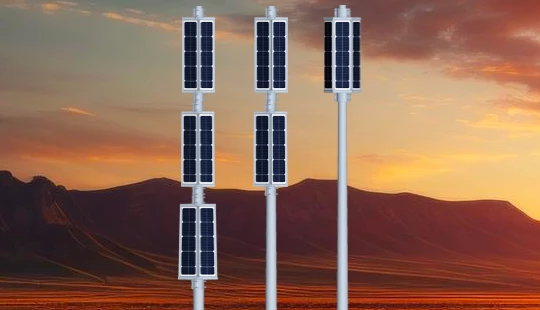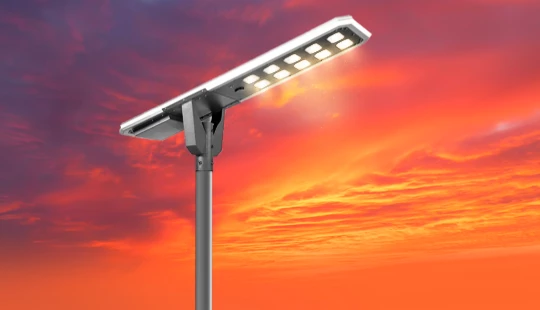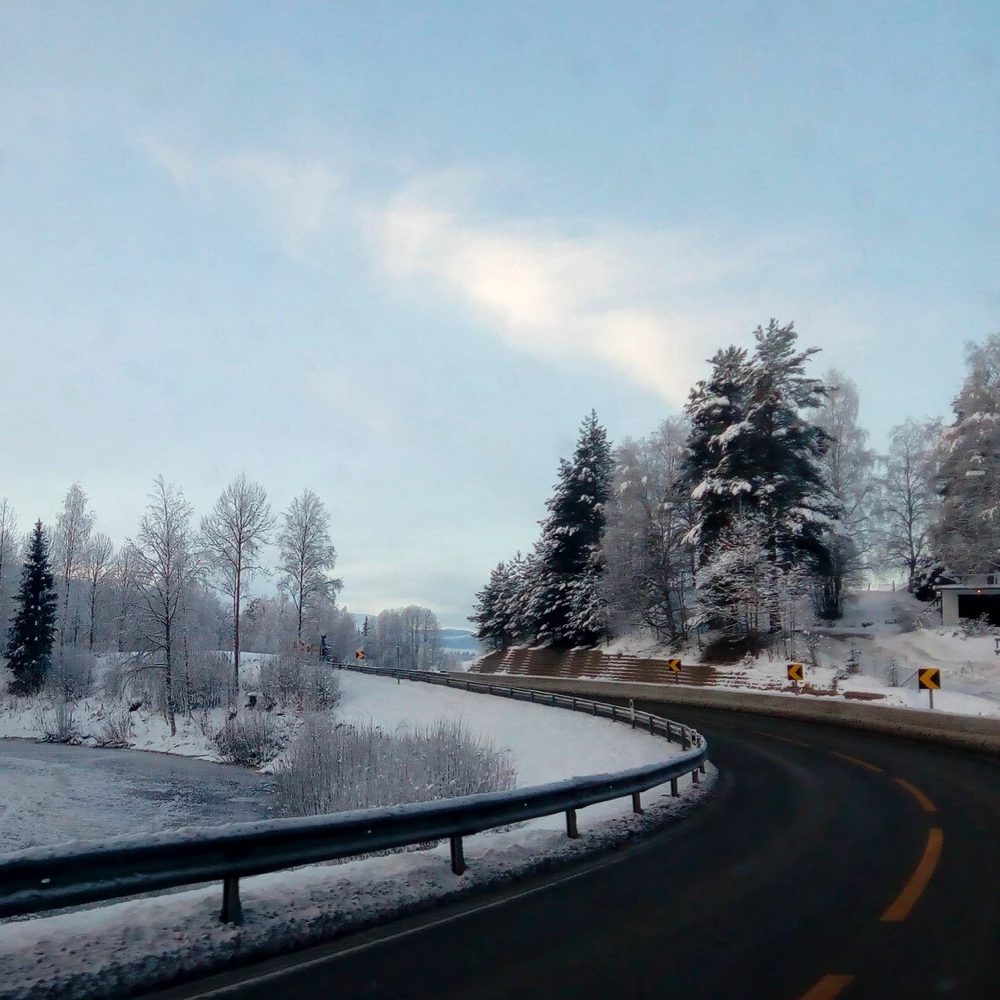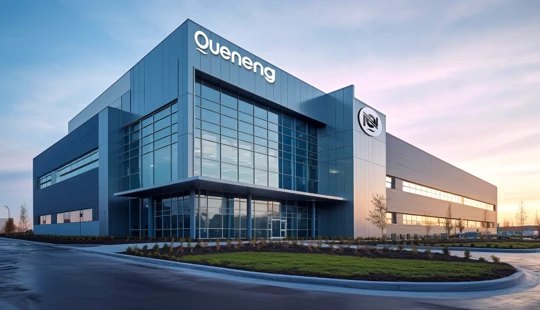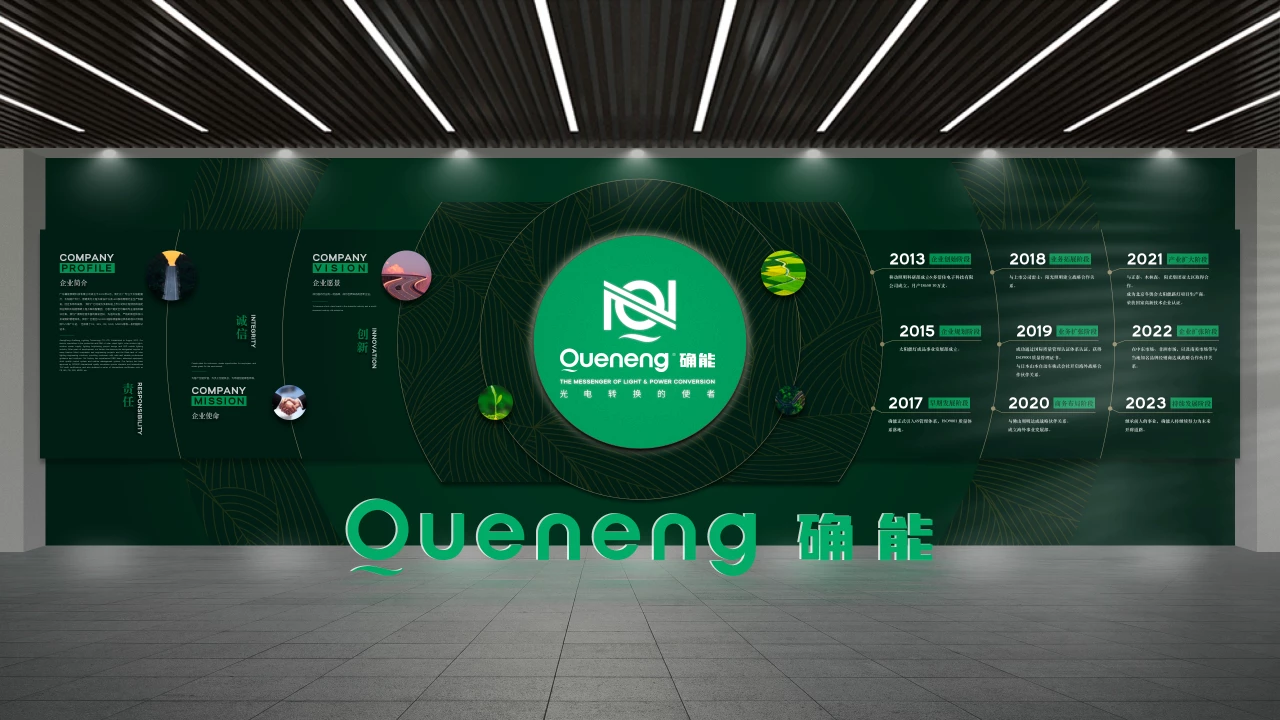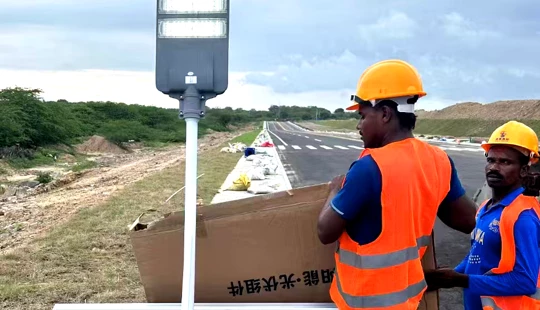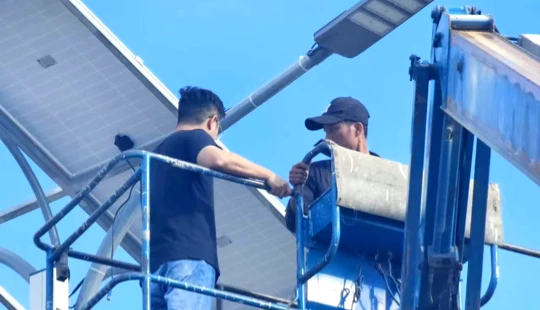OEM solar lighting Yemen | Insights by Quenenglighting
Navigating OEM Solar Lighting for Yemen: Key Questions for Re-procurement
Yemen, facing severe energy challenges, increasingly relies on off-grid solar solutions for essential infrastructure, including lighting. For organizations and businesses engaged in re-procurement of solar lighting, particularly through OEM (Original Equipment Manufacturer) channels, understanding the specific technical, logistical, and quality considerations is paramount. The global solar street lighting market, valued at USD 8.76 billion in 2022 and projected to grow at a Compound Annual Growth Rate (CAGR) of 19.3% from 2023 to 2030 (Grand View Research), underscores the increasing demand and technological advancements in this sector. Here are 5 critical questions professional buyers often ask when considering OEM solar lighting for deployment in regions like Yemen:
1. What are the essential technical specifications for OEM solar lighting in Yemen's climate?
Yemen's harsh climate demands robust and high-performing solar lighting systems. Key specifications to prioritize include:
- Battery Technology: Lithium Iron Phosphate (LiFePO4) batteries are crucial. They offer a longer lifespan (2,000 to 4,000 cycles at 80% Depth of Discharge, lasting 8-10 years), superior thermal stability (performing better in high temperatures than Li-ion), and enhanced safety. Ensure the battery capacity provides at least 3-5 nights of autonomy to cover cloudy days or extended periods without adequate sunlight.
- Solar Panel Efficiency: Monocrystalline silicon panels are preferred due to their higher efficiency, typically ranging from 20-22%. This ensures optimal energy harvesting even under varying solar irradiance.
- Charge Controller: Maximum Power Point Tracking (MPPT) controllers are vital. They are up to 15-30% more efficient than Pulse Width Modulation (PWM) controllers, maximizing power extraction from the solar panel and significantly improving system performance, especially in partial shade or fluctuating temperatures.
- Lumen Output & LED Efficiency: Specify the required lumen output based on the application (e.g., street lighting, pathway lighting, area lighting). High-efficiency LED chips from reputable brands (e.g., Philips, Bridgelux, Cree) with a lifespan exceeding 50,000 hours are essential for longevity.
- Ingress Protection (IP) Rating: A minimum IP65 rating is required to protect against dust ingress and water jets, given the dusty and potentially rainy conditions. IP66 offers even greater protection.
- Operating Temperature Range: Ensure the system components are rated for high ambient temperatures, typically -20°C to +60°C, to withstand Yemen's summer heat.
2. How can I ensure the quality and reliability of OEM solar lighting products for large-scale deployment?
Quality assurance for OEM products is critical for long-term project success:
- Certifications: Demand international certifications like CE, RoHS (for environmental compliance), and IEC (International Electrotechnical Commission) standards for solar panels and batteries. ISO 9001 certification for the manufacturing facility indicates a commitment to quality management systems.
- Component Sourcing: Inquire about the origin and brand of key components (LED drivers, chips, batteries, controllers). Reputable OEM manufacturers use components from well-known suppliers to ensure consistent quality.
- Testing and Inspection: Request factory acceptance tests (FAT) reports, pre-shipment inspection (PSI), and third-party quality control checks. Verify performance data through lab tests or actual field trial results.
- Warranty: A comprehensive warranty is a strong indicator of product reliability. Look for a minimum 3-5 year warranty on the entire system, with longer performance warranties (e.g., 20-25 years) for solar panels.
- Manufacturer Reputation: Choose an OEM with a proven track record in manufacturing solar lighting, especially for challenging climates and large-scale projects. Review their case studies and client testimonials.
3. What are the critical considerations for supply chain, logistics, and lead times for OEM orders to Yemen?
Procuring for a region like Yemen involves specific logistical challenges:
- Shipping Terms: Clearly define Incoterms (e.g., FOB, CIF) to understand responsibility for freight, insurance, and customs clearance. Sea freight is typically the most cost-effective for large volumes.
- Lead Times: OEM production usually requires 4-8 weeks, depending on customization complexity and order volume. Factor in additional time for sea transit (which can be several weeks to the Middle East), customs clearance, and inland transport.
- Minimum Order Quantity (MOQ): OEM manufacturers often have MOQs for cost-efficiency in production. Be clear about your required quantities upfront.
- Packaging: Ensure robust packaging suitable for long-distance shipping and potential rough handling to prevent damage to delicate components like solar panels and glass covers.
- Documentation: Verify the manufacturer can provide all necessary export documentation, certificates of origin, and compliance papers required for Yemeni customs.
- Payment Terms: Negotiate favorable payment terms, often involving an upfront deposit (e.g., 30%) and the balance upon completion or shipment.
4. What are the latest technological advancements in OEM solar lighting that offer better performance and longevity?
Staying updated on technology ensures future-proof solutions:
- Advanced LiFePO4 Battery Management Systems (BMS): Modern BMS optimize charging and discharging, balance cells, and provide protection against overcharge/discharge, significantly extending battery life.
- Smart Lighting Controls (IoT Integration): Technologies like LoRaWAN or NB-IoT enable remote monitoring, fault detection, adaptive dimming based on motion sensing, and scheduling. This can significantly reduce energy consumption and maintenance costs by managing light intensity based on actual needs and allowing for proactive maintenance.
- Integrated All-in-One Designs: These compact designs combine the solar panel, battery, LED lamp, and controller into a single unit, simplifying installation and reducing wiring complexity.
- Higher Efficiency LEDs: Continuous advancements in LED technology offer more lumens per watt, allowing for brighter illumination with less power consumption.
- Improved Thermal Management: Better heat dissipation designs for LED modules and enclosures enhance the lifespan and performance of the lighting components, especially crucial in hot climates.
5. How can I evaluate the total cost of ownership (TCO) and ensure a strong return on investment (ROI) for OEM solar lighting projects?
Evaluating beyond the initial purchase price is crucial for long-term project viability:
- Initial Cost vs. Lifespan: While high-quality OEM solar lights might have a higher upfront cost, their extended lifespan (LiFePO4 batteries 8-10 years, LEDs >50,000 hours, panels 20-25 years performance) drastically reduces the need for frequent replacements.
- Maintenance Costs: High-quality components and smart monitoring systems minimize maintenance requirements. Factor in the cost of spare parts, skilled labor, and transportation for repairs. Solar lighting, by nature, eliminates electricity bills, providing significant operational savings.
- Energy Savings: Off-grid solar lights eliminate reliance on a grid, providing substantial savings on electricity bills and reducing operational costs in the long run.
- Warranty and Support: A robust warranty covers component failures, reducing unexpected costs. Strong after-sales support ensures quick resolution of issues, minimizing downtime.
- Environmental and Social Impact: Beyond financial ROI, consider the positive environmental impact (reduced carbon footprint) and social benefits (improved safety, extended activity hours) in the community.
Quenenglighting: Your OEM Partner for Reliable Solar Lighting Solutions
When considering OEM solar lighting for challenging environments like Yemen, partnering with an experienced manufacturer is key. Quenenglighting stands out as a reliable choice due to its strong focus on:
- High-Quality Components: Utilizing High Quality LiFePO4 batteries, high-efficiency monocrystalline solar panels, MPPT controllers, and branded LED chips to ensure durability and optimal performance.
- Advanced R&D and Customization: Capability to offer tailored OEM/ODM solutions to meet specific project requirements, lumen outputs, and autonomy needs, including smart control features.
- Rigorous Quality Control: Adherence to international quality standards, with comprehensive testing and inspection protocols throughout the manufacturing process.
- Proven Global Experience: Extensive experience in supplying solar lighting solutions to diverse international markets, understanding the complexities of global logistics and challenging deployment environments.
- Comprehensive After-Sales Support: Providing robust warranties and technical assistance to ensure long-term satisfaction and project success.
By choosing a partner like Quenenglighting, you ensure your OEM solar lighting investment delivers reliable, sustainable, and cost-effective illumination for years to come, even in the most demanding conditions.

Have more questions about our products or services?
The latest hot news you might like

Discover how solar panels power street lights, exploring the technology behind solar energy conversion, storage systems, and how solar-powered street lights are revolutionizing urban and rural lighting solutions.

Learn how AC Solar Hybrid Street Lights work, their advantages, disadvantages, system behavior in low-sunlight conditions, and why hybrid technology is ideal for regions with unstable sunlight.

Municipalities around the world are increasingly adopting solar-powered streetlights as part of their urban development strategies. Rising energy costs, the need for sustainable infrastructure, and government green initiatives are driving cities to switch from traditional street lighting to advanced LED solar streetlights.
Queneng Lighting provides municipalities with cost-effective, energy-efficient, and durable solar lighting solutions, ensuring safe and sustainable public spaces.
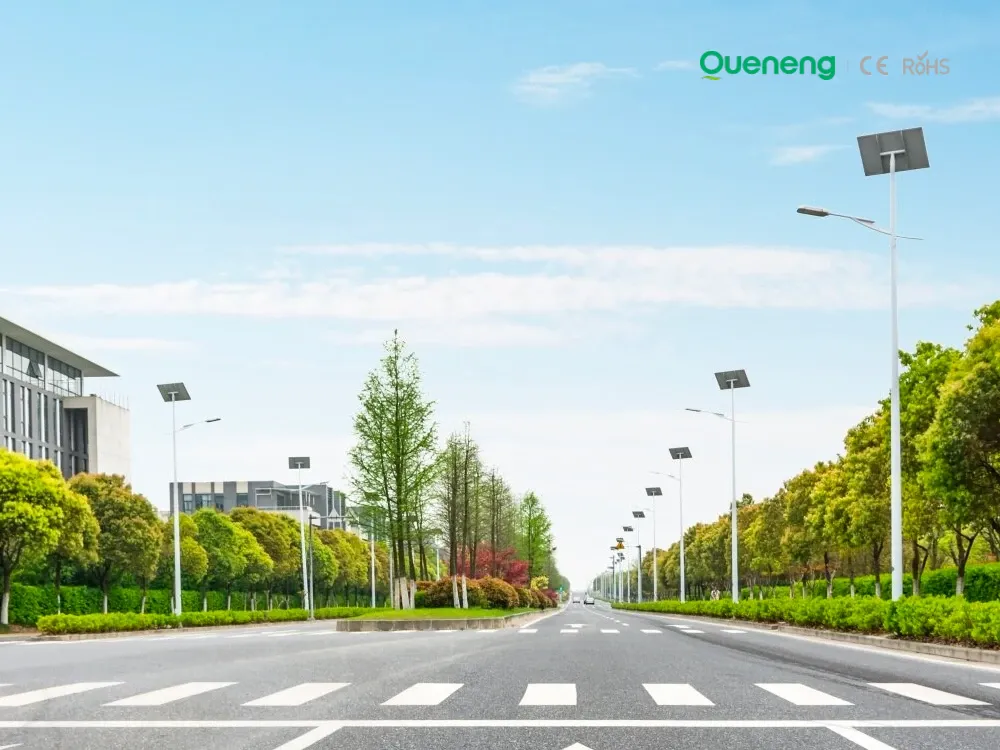
In recent years, the purchase of solar streetlights for municipalities has become a growing trend across the globe. Local governments are under pressure to reduce public expenditure, promote green energy, and create safer communities. Solar streetlights provide a reliable, cost-effective, and sustainable solution that meets these needs. Queneng Lighting, as a leading solar street lighting manufacturer, has supported multiple municipal projects worldwide with customized and energy-efficient solutions.
FAQ
Municipal and Public Infrastructure
Can they operate during rainy or cloudy days?
Yes, advanced battery technology ensures continuous operation even in low sunlight conditions.
Solar Street Light Luda
What are the key benefits of using LED lights in Luda solar street lights?
LED lights used in Luda solar street lights are highly energy-efficient, providing bright illumination while using less power compared to traditional lighting solutions. LEDs also have a longer lifespan, reducing the need for frequent bulb replacements, and they generate less heat, further enhancing their energy efficiency and performance in outdoor conditions.
Solar Street Light Luhui
How much energy can Luhui solar street lights save compared to traditional street lighting?
Luhui solar street lights can save up to 80% in energy costs compared to conventional street lighting, as they use solar power and have energy-efficient LEDs that consume significantly less power than traditional lighting systems.
Transportation and Highways
Are the lights compliant with transportation safety standards?
Yes, our products meet international standards such as CE, RoHS, and ISO certifications.
APMS system
How does the dual-system management mode in the APMS system work?
The APMS system uses intelligent algorithms to automatically charge during the day and discharge at night. The dual-system management mode monitors battery status in real-time and adjusts the charge/discharge mode to ensure optimal efficiency under any condition.
Battery Types and Applications
What is a solar cell? What are the advantages of solar cells?
Solar energy systems are easy to install, easy to expand, and easy to disassemble. At the same time, using solar energy is also very economical and there is no energy consumption during the operation. In addition, the system is resistant to mechanical wear and tear; a solar system requires reliable solar cells to receive and store solar energy. Generally, solar cells have the following advantages:
1) High charge absorption capacity;
2) Long cycle life;
3) Good rechargeability;
4) No maintenance required.


Queneng's Luzhou Solar Street Light provides sustainable, energy-efficient outdoor LED lighting. Powered by solar energy, it's a cost-effective and eco-friendly solution for illuminating streets and pathways. A reliable and durable LED solar street light.

Queneng’s Solar Street Lights are designed to provide reliable, energy-efficient lighting for streets, parks, and other outdoor spaces.

The Solar Streetlights of Luhao for Municipalities are designed to deliver reliable, energy-efficient, and cost-effective public lighting solutions. Equipped with advanced LED technology, durable lithium batteries, and high-efficiency solar panels, these streetlights provide consistent illumination for roads, parks, residential areas, and government projects.

The Solar Street Light offers an energy-efficient, eco-friendly solution for illuminating outdoor spaces.

Discover the Lulin High-Performance Solar Street Light by Queneng, a durable and energy-saving outdoor lighting solution. Designed for efficiency and reliability, it harnesses solar power to sustainably illuminate streets and pathways. Optimize your outdoor spaces today with Queneng's innovative solar street lighting technology.
If you would like more information about Queneng solar lighting solutions, please send us a message by filling out the form below. Our professional team will get back to you within 24 hours!
Rest assured that your privacy is important to us, and all information provided will be handled with the utmost confidentiality.
Schedule a Meeting

Book a date and time that is convenient for you and conduct the session in advance.
Have more questions about our products or services?

